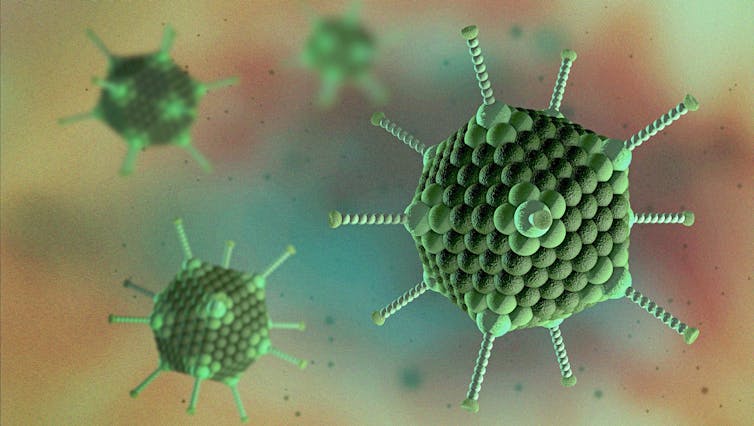In the spring of 2022, a paediatric gastroenterologist treating children in the Queen Elizabeth University Hospital in Glasgow issued an alert to Public Health Scotland (PHS), warning of an unusual outbreak of hepatitis cases in her clinic.
Hepatitis refers to inflammation of the liver, and is usually caused by viral infections, toxins (including alcohol), medications, autoimmune conditions or inherited conditions. Hepatitis is unusual in children and when it does occur, cases are generally isolated.
The children had presented to hospital mostly with a history of gastrointestinal illness weeks earlier, with jaundice, and in some cases with severe liver failure. PHS initiated an urgent investigation of these cases which were noted to affect children of nursery or primary school age, the majority of whom had been otherwise fit and healthy.
PHS officials informed their counterparts in England at the UK Health Security Agency (UKHSA), who noted that they too were seeing an uptick in such cases.
The UK public health agencies alerted the World Health Organization (WHO), and by the summer of 2022, more than 1,000 children around the world were reported to have been affected – the majority in Europe and the Americas. Around half of the European cases occurred in the UK.
The consequences for some children were severe: 22 died and 46 required a liver transplant.
We still don’t fully understand what caused this outbreak, which has now subsided. But three new studies published in Nature offer important clues.
A real-time investigation
As soon as the alert was raised, PHS engaged a team of experts to investigate the outbreak in Scotland, while a UKHSA technical science group was assembled in England.
Children who had been diagnosed with hepatitis were invited to give blood samples with consent from their parents or guardians. The scientists looked for viruses that commonly cause hepatitis in children, as well as for rarer conditions and toxins.
These tests didn’t reveal a clear cause, although it was noted that many of the children had tested positive for the human adenovirus F41 (HAdV F41) – a common cause of gastrointestinal infection in children, but not hepatitis.
Samples from the Scottish children were then transferred to the MRC-University of Glasgow Centre for Virus Research, where my colleagues and I investigated further. Our centre has expertise in the use of next generation sequencing (called metagenomic sequencing) to look for new or emerging viruses that are not routinely identified in NHS diagnostic tests. In parallel, samples from affected English children were sent to University College London (UCL) for similar testing.
Both laboratories identified that the majority of the children with hepatitis had evidence of a virus called adeno-associated virus 2 (AAV2) in their bloodstream, and also in the liver samples from those children who had required a liver biopsy. For example, we detected AAV2 in 26 out of 32 cases of hepatitis, compared with only five out of 74 healthy children we studied as a comparison group.
HAdV F41 was also detected in several (but not all) cases, in blood, liver and gastrointestinal samples.
Hepatitis cases are increasing among children in the UK – could COVID have a role to play?
AAV2 belongs to a group of viruses called Dependoparvovirus. It is known to replicate in the liver, but to do so it usually requires a “helper” virus such as an adenovirus like HAdV F41 (hence its name), or other viruses such as herpesviruses. AAV2 has not previously been found to cause illness.
In our research, we were able to see AAV2 in diseased liver cells using a technique called in situ hybridisation. We also measured the immune response to AAV2 in affected children, and found the majority of these children had evidence of IgM antibodies in their bloodstream, which indicates a recent infection.
Our results suggest that AAV2 may have been the cause of this outbreak of hepatitis in children. However, as it co-occurs with adenovirus infection, it could be that HAdV F41 is responsible as well. Further studies will be required to confirm which virus is the most likely cause.

Christoph Burgstedt/Shutterstock
Working with experts around Scotland, we also found that the majority of affected children had an underlying genetic susceptibility. Some 93% of the children with hepatitis carried a gene that’s linked with the immune response directed by T cells, compared with 16% in the control group. The presence of this gene means that hepatitis in these cases is likely to have been related to an over-reactive immune response.
What about COVID?
These research findings are published in two new articles in Nature, one from my team in Scotland and the other from the UCL researchers. A third study published in the same edition reports the detection of AAV2 in affected children in the US, also using metagenomic sequencing.
The UK and US authors concluded that changes in the circulation of viruses after COVID lockdowns may have increased the chances of children being exposed for the first time to multiple viruses. Our paper shows that a wave of adenovirus infection immediately preceded the paediatric hepatitis cases in Scotland, but samples were not available to look at the circulation of AAV2.
Interestingly, a recent publication from Ireland confirmed that both adenovirus and AAV2 viruses peaked in sewage samples taken from the Ringsend wastewater treatment plant in Dublin immediately before a similar outbreak of paediatric hepatitis in Ireland.
While these findings suggest strongly that AAV2, HAdV F41 and the immune response to one or both of these viruses underlie the cases of hepatitis seen around the world, larger studies are needed to confirm the findings. We also need to develop and test new treatments for affected children in case a new outbreak occurs.




